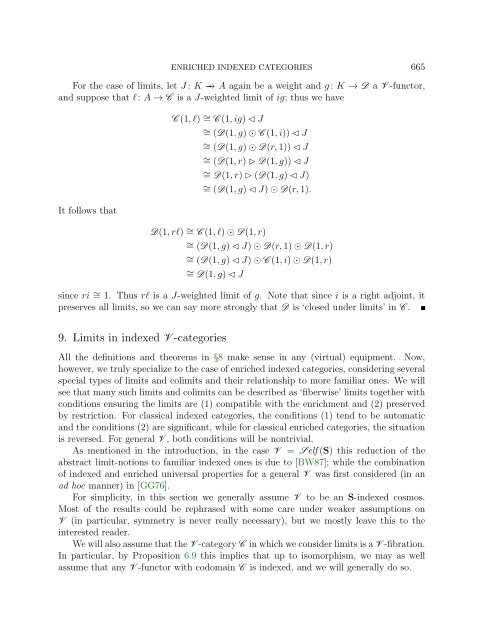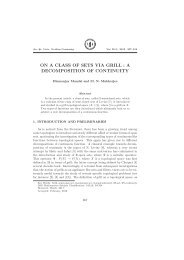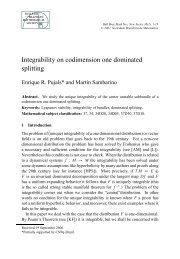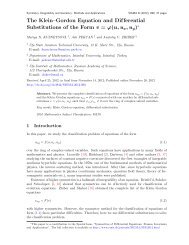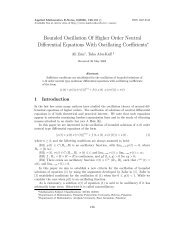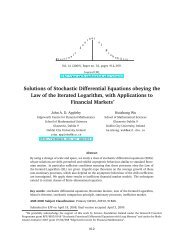ENRICHED INDEXED CATEGORIES Contents 1. Introduction
ENRICHED INDEXED CATEGORIES Contents 1. Introduction
ENRICHED INDEXED CATEGORIES Contents 1. Introduction
Create successful ePaper yourself
Turn your PDF publications into a flip-book with our unique Google optimized e-Paper software.
<strong>ENRICHED</strong> <strong>INDEXED</strong> <strong>CATEGORIES</strong> 665For the case of limits, let J : K −↦−→ A again be a weight and g : K → D a V -functor,and suppose that l: A → C is a J-weighted limit of ig; thus we haveIt follows thatC (1, l) ∼ = C (1, ig) ⊳ J∼ = (D(1, g) ⊙ C (1, i)) ⊳ J∼ = (D(1, g) ⊙ D(r, 1)) ⊳ J∼ = (D(1, r) ⊲ D(1, g)) ⊳ J∼ = D(1, r) ⊲ (D(1, g) ⊳ J)∼ = (D(1, g) ⊳ J) ⊙ D(r, 1).D(1, rl) ∼ = C (1, l) ⊙ D(1, r)∼ = (D(1, g) ⊳ J) ⊙ D(r, 1) ⊙ D(1, r)∼ = (D(1, g) ⊳ J) ⊙ C (1, i) ⊙ D(1, r)∼ = D(1, g) ⊳ Jsince ri ∼ = <strong>1.</strong> Thus rl is a J-weighted limit of g. Note that since i is a right adjoint, itpreserves all limits, so we can say more strongly that D is ‘closed under limits’ in C .9. Limits in indexed V -categoriesAll the definitions and theorems in §8 make sense in any (virtual) equipment. Now,however, we truly specialize to the case of enriched indexed categories, considering severalspecial types of limits and colimits and their relationship to more familiar ones. We willsee that many such limits and colimits can be described as ‘fiberwise’ limits together withconditions ensuring the limits are (1) compatible with the enrichment and (2) preservedby restriction. For classical indexed categories, the conditions (1) tend to be automaticand the conditions (2) are significant, while for classical enriched categories, the situationis reversed. For general V , both conditions will be nontrivial.As mentioned in the introduction, in the case V = Self (S) this reduction of theabstract limit-notions to familiar indexed ones is due to [BW87]; while the combinationof indexed and enriched universal properties for a general V was first considered (in anad hoc manner) in [GG76].For simplicity, in this section we generally assume V to be an S-indexed cosmos.Most of the results could be rephrased with some care under weaker assumptions onV (in particular, symmetry is never really necessary), but we mostly leave this to theinterested reader.We will also assume that the V -category C in which we consider limits is a V -fibration.In particular, by Proposition 6.9 this implies that up to isomorphism, we may as wellassume that any V -functor with codomain C is indexed, and we will generally do so.


